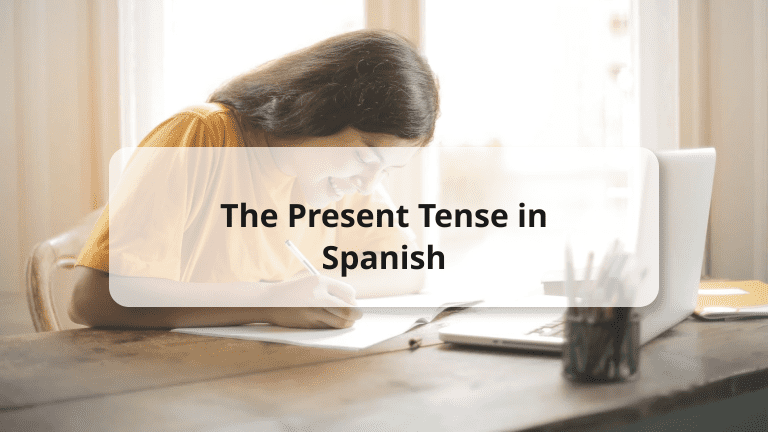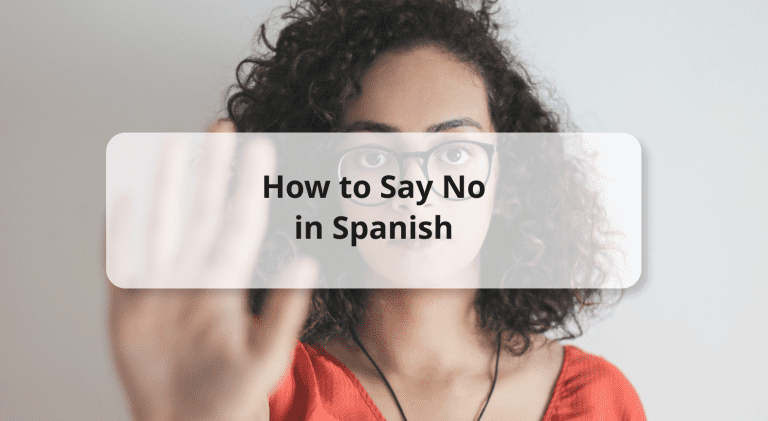
“Used to” or “Use to” – Differences And Grammar Rules
“Used to” or “use to”? What’s the difference? Many people who join the ESL course program would be confused about this. Since they sound similar, we can barely distinguish the difference by listening.

Top 15 French to English Translation Apps You Must Know
There are many types of good French to English translation apps out there. Choosing the right one can definitely help you improve your French. Check out all the French to English translation apps we recommend!

8 Common Spanish Question Words & How to Use Them
Knowing what and how to use Spanish question words will not only boost your Spanish speaking proficiency but also make you more independent in conversation. By the end of this article, you will know the 8 different Spanish questions words and how to use them1

Why Break a leg? Meaning and Origins of Break a Leg
We can hear people say “Break a leg” all the time. What does it really mean? Do we really want someone to break a leg? Find out the meaning, origin and more about “Break a leg!”

30 Examples of Email Writing for Students: Format, Tips, and More
It is important to write an email with the right format. An email must include a subject, a greeting, a body, a closing and your signature. Find out more about the templates to write emails for schools, workplaces and personal occasions.

10 Ways to Say Beautiful in Spanish | Hermosa Meaning & More
Spanish is a beautiful language, a common way of describing someone or something as beautiful would be Hermosa, meaning “beautiful” and “gorgeous”. There are many other ways to say beautiful in Spanish. If your crush reciprocates your feelings and you’re ready to take the next step it would be worth learning 10 different ways to say beautiful in Spanish.

How to Tell the Time in English: Complete Guide & Examples
If you are not sure how to tell time or how to write time in English, you are in the right place! This article will provide you with a systematic guideline and lots of examples for telling time in English. Even if you are an English beginner, you will know how to tell the time after reading this article no matter what time it is!

What is a Gerund Phrase: Definition, Examples & Grammar Rules
A Gerund phrase is essentially when a verb takes on an “-ing” and becomes a functional noun and the same grammar rules apply. It is created from various non-finite verb forms in many languages. A gerund is also known as the continuous present, as the “-ing” provides present continuity to the verb. The function of gerunds is that they can be used alone or together with other words to form a gerund phrase, whereby the gerund phrase behaves like a single noun. Both the gerund and the gerund phrase above function as subject nouns and take the third-person singular verb “is”.

80 British Slang Words and Phrases & Their Meanings
If you’re a fan of the BBC or Netflix shows like Bake Off, Derry Girls, or Peaky Blinders, then chances are you’ve encountered some British slang. Slang words in Britain are a little different than what you might be used to even if you are fluent in American English. Knowing these words can not only help you understand and communicate better, but it can also tell you a lot about their culture.

How to Say the Colors in Spanish?
Colors are seen and used every day in our lives. Learning how to say the names of colors in Spanish, will help you a lot in terms of building your Spanish vocabulary and overall fluency.
In this article, we will brighten up your world by teaching you how to say colors in Spanish, how to categorize colors, how to describe colors, and how to use colors to describe people!

How to say Good Morning and Good Evening in Chinese
“早(zǎo)”, “早安 (zǎo an)” and “早上好 (zǎo shang hǎo)” all mean “Good Morning” in Mandarin Chinese. Just like in English, it is common to greet people by saying “good morning”, “good afternoon” or “good evening”, when you first saw them or speak to them in a day. It is considered essential to greet people in Chinese culture, especially in workplaces. Knowing how to say “good morning”, “good afternoon” or “good evening” is important in formal events such as business gatherings.

20 Ways to Call your Partner Beautiful in Spanish – Bella & Más!
Want to call your partner all the hundreds of ways they are attractive, but aren’t sure how to express them in Spanish? This article will teach you how to say beautiful in Spanish in 20 different ways, and phrases to sweep your partner off the ground!

Difference Between To and Too: When to Use, Examples, Tips
What’s the difference between to and too?
These two words confuse many people when writing, and speaking English. This is true for both native speakers and people who are wondering how to learn English.
The reason these words are so confusing is that they are homophones. Homophones are words that sound exactly the same, but are spelled differently, and mean entirely different things.
In this article we will give you a detailed definition of each of these words, along with some examples, to make learning and using these words fun, and easy for you.

“Good Night” in Spanish & 50 Other Evening Phrases
Learn 50 different ways to say “good night” in Spanish with this educational article. The most simple phrase for good night is “buenas noches”, with buenas meaning “good” and noches meaning “night”.

“How Are You Doing?” vs “How Are You?” What is the Difference?
What are the differences about How are you and How are you doing? Are they the same? Which sounds more polite? Come learn and say “How you doing” like Joey!

15 of the Best Spanish Translator Apps
With Spanish translator apps, you can learn Spanish on the go. If you’re learning Spanish in 2022, language learning apps are your new best friend.

15 Ways to Ask and Answer How Are You in Chinese
Learn to say a proper “How are you?” in Chinese can impress your Chinese-speaking friends for sure. There are more than one way to greet in Chinese. Don’t just stop at 你好嗎? (Nǐ Hǎo Ma), find out more!

12 Months of The Year in English with Sentences
Wondering how to say months of the year in English? From January to December, the origins of these names are more than you think.

Present Tense Spanish: Complete Verb Rules
Present tense in Spanish is used commonly to talk about things happening currently, actions, routines, and to state universal truths, facts, and hypotheticals. These verb conjugations can happen using 3 different verb endings: -ar, -er, -ir.
Whether you are learning Spanish grammar on your own, or by taking online Spanish courses, there is a lot of practice and memorization required to understand how to use Spanish conjugations of verbs for the present tense correctly.

25 Ways to Say No in Spanish: Formal, Casual Ways with Audio
Saying No in Spanish is easy: Just “No!” like English, but there are still many other way to reject in Spanish. Learn how to say No in Spanish in polite ways and more casual ways.

20 Ways to Say How are You in Spanish | Formal & Informal
Learning to say “how are you” in Spanish can help you grasp the language better. Moreover, it will help you improve you conversation skills, and provide you with the chance to talk to more Spanish native speakers!



